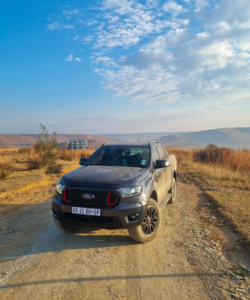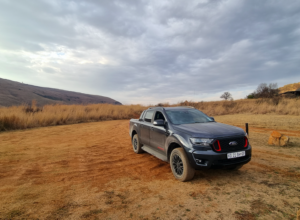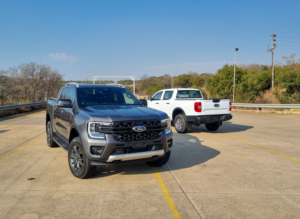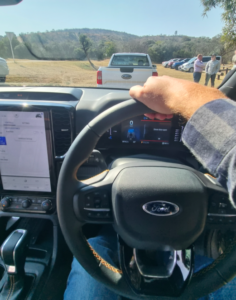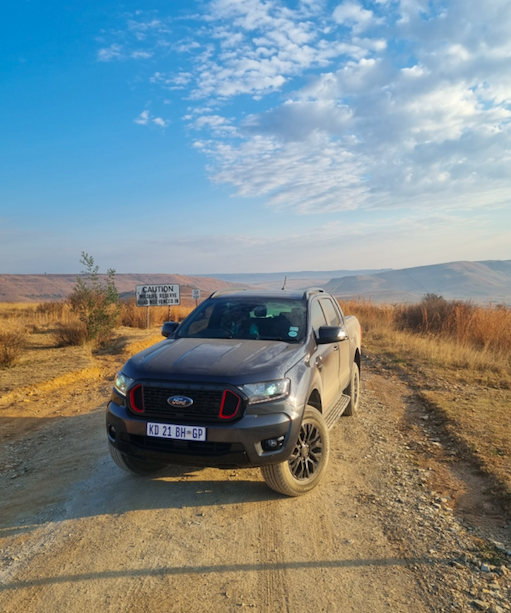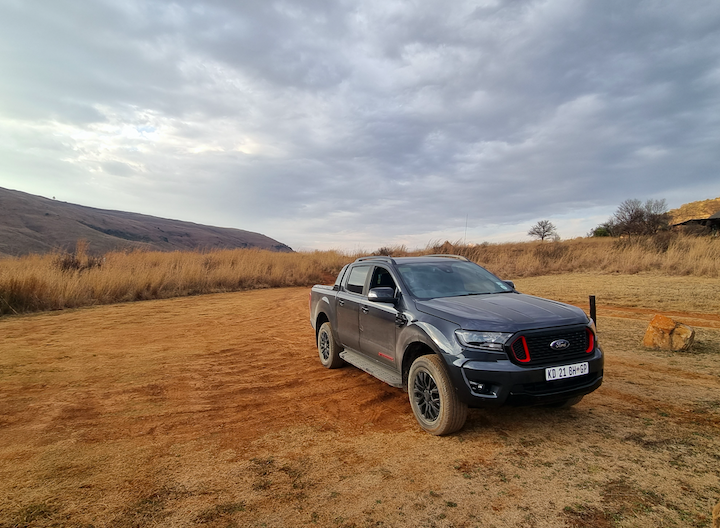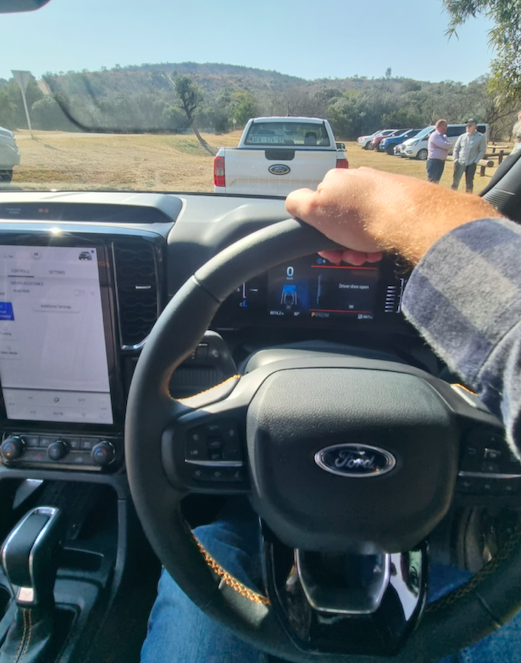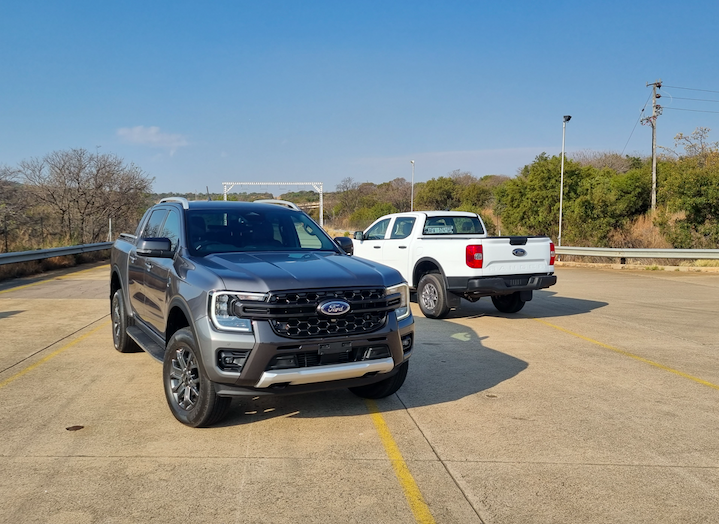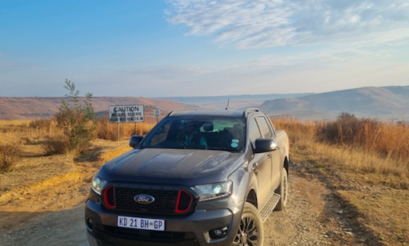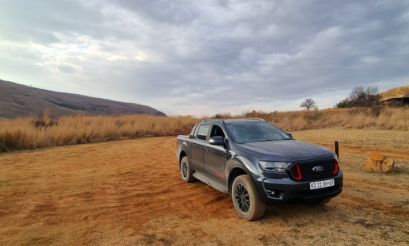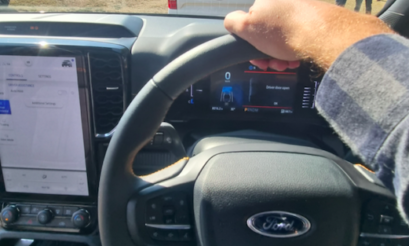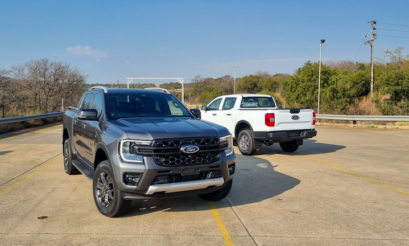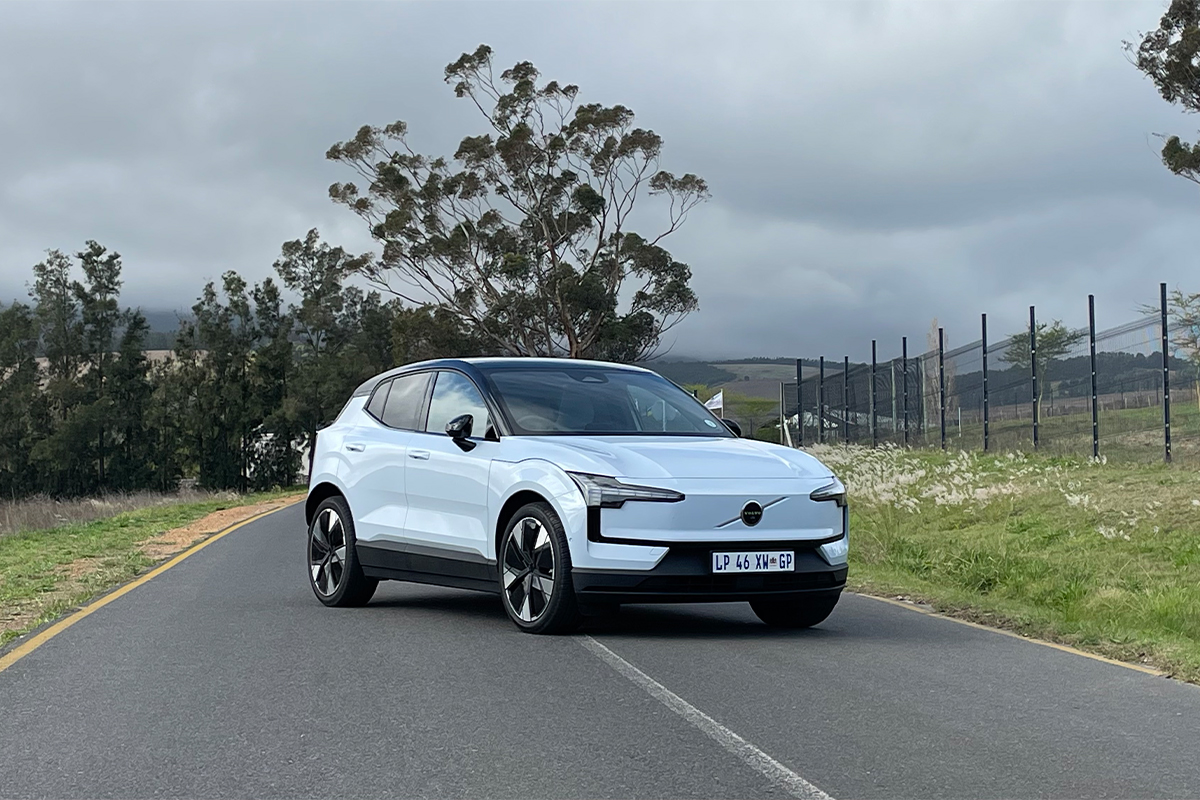So how does the new Ford Ranger compare to the outgoing model? We drive both, back-to-back.
This is an unfamiliar feeling. Driving a current model to the launch of its replacement isn’t something that I’ve done before, despite many years of doing this job. The timing never works out, the overlap never presents itself.
And to be fair, the only reason it’s happening now is because this isn’t the official launch of next-gen Ranger – that’s expected later this year. Instead, it’s an exclusive opportunity to sample some of the first locally assembled Tooling Trial units on home soil, while nearly replicating the final market specification.
My first thought on the way there is that while some models desperately show signs that a replacement can’t be far away, this current Ranger – Stormtrak to be precise – still feels outstandingly fresh. It’s more than capable of matching newer rivals for technology, style, standard specification, economy and comfort. In fact, there’s not an area – besides outright performance where some of the larger-engined bakkies beat it – that the Ranger isn’t top of its class, or a close second.
Special edition models like the Stormtrak have helped evolve the package with standard features like the electronic roller shutter and load bin divider. The roller shutter isn’t without its flaws, however; on a gravel road it’s guilty of covering your luggage in dust and it chops the vertical loading capacity without offering an inch of compromise.
The Stormtrak plays a level hand, supporting its workhorse roots and accepts new lifestyle and fashionable traits. Flagship derivatives like this have provided something of a watershed moment for bakkies in general and introduced terms like ‘car-like handling’ and ‘all-rounder’ to a previously one-dimensional segment.
I could continue to praise the Stormtrak’s virtues – a second-hand model when the next-gen hits showrooms is still a fantastic and value-based alternative – but as I enter Gerotek’s Testing Facility my focus narrows toward the new model. Specifically, how will it improve things, and how will Ford ensure that in a decade’s time, it’ll feel as relevant as the current one does now?
And let’s throw more one challenge into the mix: Pressure. Ford simply has to hit the bullseye with the Ranger, it’s the breadwinner for the company, and the consequence of getting it wrong, in even the slightest way, can’t be overstated.
So you want some first quick-fire impressions. Despite being longer and wider, it shouldn’t pose much of a nuisance on South African roads and parking spaces. Secondly the design lives up to those press images. Bold and confident, it should easily find favour with South African tastes. I predict it’ll become a regular sight in a variety of landscapes.
Inside the cabin, rear legroom is one of the biggest recipients of the new dimensions and when you get behind the wheel you’re immediately aware of the generational leap in technology. The screen directly ahead is more customisable and the huge tablet screen (even on base models) instantly grabs your attention. In tech lingo, this is the local debut of Ford’s SYNC4 system and it comes with a bump in resolution, speed, customization and personalization. SYNC 3 was relatively robust in its operations but did show its age particularly around the navigation system and really outdated colour scheme and insipid graphics. That seems to be taken care of here.
A few swipes and prods confirms that it’s the new benchmark for bakkies and wouldn’t be out of place in something like a Mercedes S-Class. Conventional knobs and buttons for the climate mean that Ranger won’t alienate customers who are perhaps a little less eager to embrace a fully digitized world.
We were warned that since these are Tooling Trial Units, small unforseen gremlins might reveal themselves but these bakkies felt remarkably close to the finished product. Ford Rangers have always prided themselves on offering premium, soft touch materials and this new model hides any cheap hard plastic out of sight.
Clutter has been reduced and but not at the expense of functionality. It’s a cabin that channels through a softer side with finessed, slimmer ergonomics that give it a greater cosmopolitan background than what we’re used to in the segment.
The tech supports a more calming and accessible experience. You needn’t need to move more than your left hand to swivel through camera views, set the payload lighting or go through the various driving modes. Every action feels lighter and faster.
It’s a quiet cabin, that’s not at all intimidating to use and perhaps the greatest compliment is that within minutes I was whizzing it around the high-speed oval, fully trusting its chassis and feedback and safety systems.
Sadly for us we’ll still need to wait a bit longer before we can comment on the all-new 3.0-litre V6 but the 2.0-litre turbo on test is still likely to pull the bulk of local sales. Power outputs are yet to be disclosed for SA but the general consensus among the group was that throttle action was sharper, a sensation that could just as easily be the result of revised mapping or gearbox ratios. Either way, it a smooth quiet engine that could easily fit into the mechanical refinement of a Ford Focus and reinforces why Ranger can ask a premium over the noisier, turbo-lagged competitors from China.
Brief as our time with the next-gen Ranger was, I left with no concerns that it takes everything from the existing Ranger and dials it up a little bit. Customer feedback has been a big factor here too and it shows in the smallest ways, from storage spaces to USB charging points and access to the loadbox via an integrated step. If the current Ranger is just about inching into the crosshairs of its competitors, it might take years for the competition to catch up to this next one.
